John Hurrell – 1 September, 2011
With so many paintings consisting of shallow trays of daubs, their containerlike quality becomes a parallel to the cross-sectioned bowl forms of the Klisic diagrams. Such an implied correlation delineates the artist's search for bliss and fulfilment within his practice - referring to himself as self-reflexive but ecstatic throughout the transmuting process.
It is almost a year after Dan Arps won the Walters Prize and this Lett show is his first major presentation since. Because Michael Lett’s new gallery has a very different ambience from his old K’ Rd space and from Gambia Castle, this exhibition feels more expansive bodily, and more compacted conceptually. Other than the tight sculpture exhibition he did for Stephen Cleland’s Unpacking My Library show at Te Tuhi, this display is unusually focussed.
As a project the show’s sculpture and painting seems to be embedded in notions of Reichian psychotherapy. Eight posters from the website of Czech Radix therapist Ljiljana Klisic are scattered on the floor and another is on a nearby wall, and the paintings, while typically resisting the conventions of ‘normal’ painting with their pictorial structure and sometimes peculiar materials, do contain loaded symbolism that refers to orgasm, symbolic bodily confinement (with oppressive anxieties) and blissful release from the isolated self. Grids of steel rods act as foils to painted patches of liberating blue sky and adhesive vinyl rectangles of yellow sunlight.
These paintings are often smeared with stringy, puttylike concoctions, as if scraped out of a bucket of semi-solid, fibrous chewing gum. Sometimes they are reversed so the back is at the front with texted collage, plaster and medical gauze stuck over the stretcher bars, or else made of thin ‘whiteboards’, their transparent glass rear surfaces scratched and stained with smudged colour. These paste-wiped planes with pressed putty frames - and sculptures on stands with epoxy gunk globbed onto draped garments (wrapped in chains) or prickly plastic cacti complete with dangling green lights - look appealingly repulsive, so ruinously incoherent and decrepit as to form their own art historical genre, thus becoming reborn as ‘beauty’, reinvigorated and delectable.
With so many paintings consisting of shallow trays of daubs, their containerlike quality becomes a parallel to the cross-sectioned bowl forms of the Klisic diagrams. Such an implied correlation delineates the artist’s search for bliss and fulfilment within his practice - referring to himself as self-reflexive but ecstatic throughout the transmuting process.
One large projecting painting is a thick white and purple hardboard box with two sprayed vertical slot eyes, an inverted curving frown and a crack where it has been punched. Assuming that this item is a self portrait then the show comes across as a methodical search for self love. The show’s strange title, Hobson’s Gardens, with its allusion to Hobson’s Choice, implies Arps has had no option but to act from necessity to tend to his artworks and himself as needy gardens.
As for ecstasy - in what way you might wonder? Are we thinking coital (in terms of bodily pleasure), or is it simply the immense pleasure artists have planning and creating works? Or is it social (more community oriented, the mingling of the ‘art tribe’), or even mystical with cosmic dimensions?
Or is Arps just having a laugh placing these nifty looking posters amongst his unusually ‘anti-aesthetic’ or calculatedly ‘ugly’ works, hoping convincing connections will burst forth from possibly over-imaginative interpreters. Like say Vicente Todoli, or gulp..yours truly.
I think this show is Arps at his smartest and tightest. (I won’t say most candid because I have no idea. I don’t know him well enough to be able to answer that.) Nevertheless it’s essential viewing.
John Hurrell

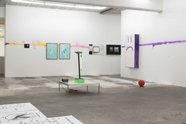
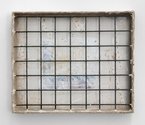

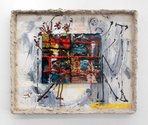

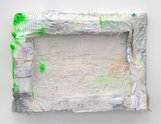
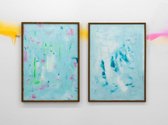
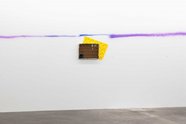

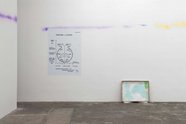
 Two Rooms presents a program of residencies and projects
Two Rooms presents a program of residencies and projects Advertising in this column
Advertising in this column



This Discussion has 0 comments.
Comment
Participate
Register to Participate.
Sign in
Sign in to an existing account.